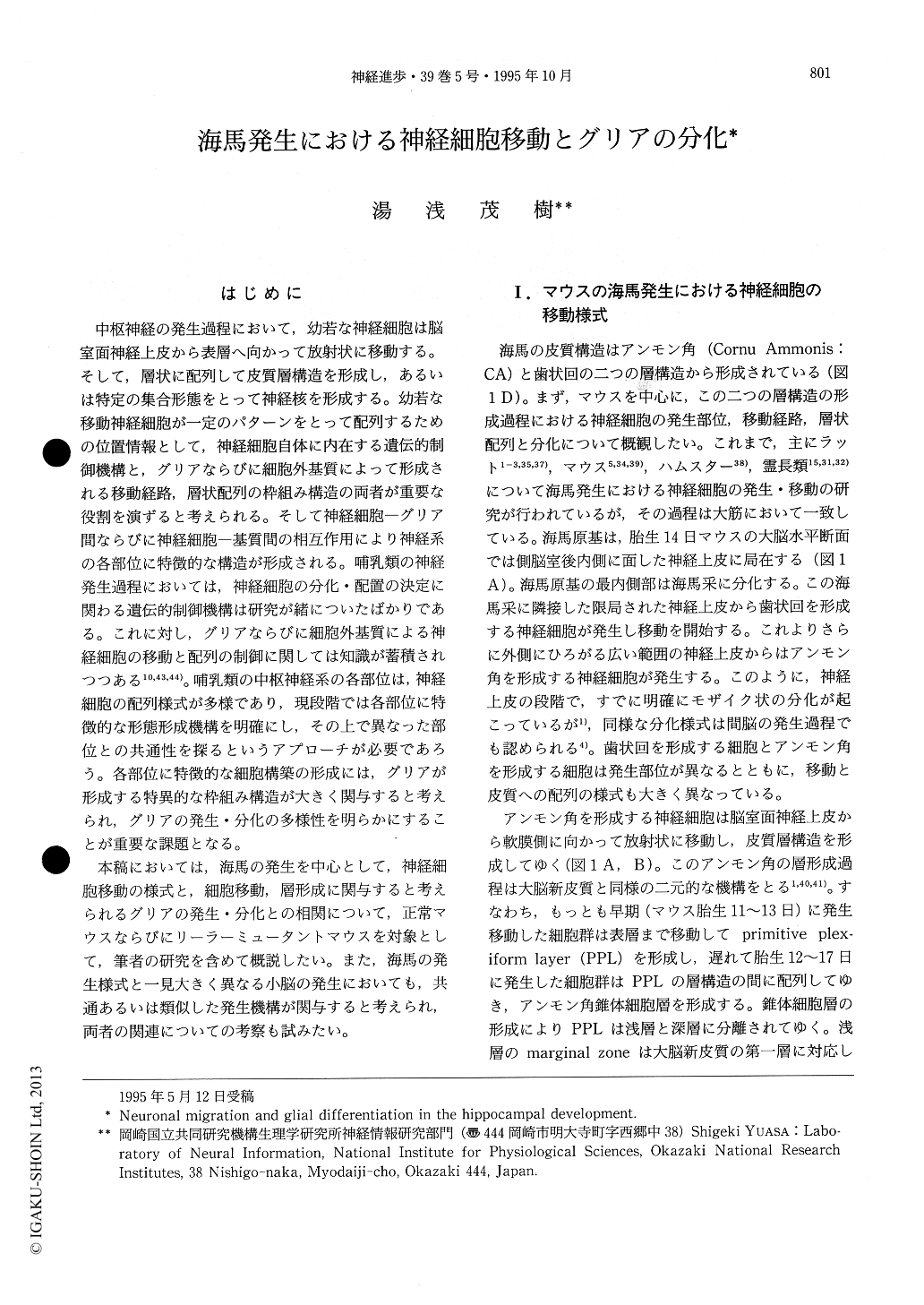Japanese
English
- 有料閲覧
- Abstract 文献概要
- 1ページ目 Look Inside
はじめに
中枢神経の発生過程において,幼若な神経細胞は脳室面神経上皮から表層へ向かって放射状に移動する。そして,層状に配列して皮質層構造を形成し,あるいは特定の集合形態をとって神経核を形成する。幼若な移動神経細胞が一定のパターンをとって配列するための位置情報として,神経細胞自体に内在する遺伝的制御機構と,グリアならびに細胞外基質によって形成される移動経路,層状配列の枠組み構造の両者が重要な役割を演ずると考えられる。そして神経細胞―グリア間ならびに神経細胞―基質問の相互作用により神経系の各部位に特徴的な構造が形成される。哺乳類の神経発生過程においては,神経細胞の分化・配置の決定に関わる遺伝的制御機構は研究が緒についたばかりである。これに対し,グリアならびに細胞外基質による神経細胞の移動と配列の制御に関しては知識が蓄積されつつある10,43,44)。哺乳類の中枢神経系の各部位は,神経細胞の配列様式が多様であり,現段階では各部位に特徴的な形態形成機構を明確にし,その上で異なった部位との共通性を探るというアプローチが必要であろう。各部位に特徴的な細胞構築の形成には,グリアが形成する特異的な枠組み構造が大きく関与すると考えられ,グリアの発生・分化の多様性を明らかにすることが重要な課題となる。
Glial framework and substrate adhesion molecules produced by the glial component play important roles as the positional cues for the directional cell migration and cortical formation during the neural development. In this article, the significance of the glial boundaries and neuron-glia interrelations are reviewed in the mouse hippocampal development, especially in the development of the dentate gyrus. The features of cellular interactions common to the cerebellar development are also discussed.

Copyright © 1995, Igaku-Shoin Ltd. All rights reserved.


